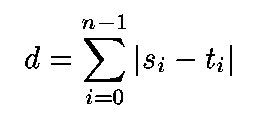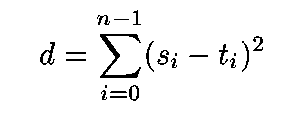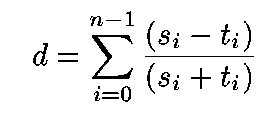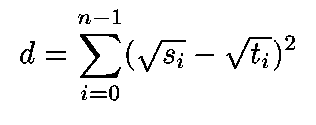
URL: https://pubsdata.usgs.gov/pubs/of/1994/of94-645/distance.html
Page Contact Information: Publication Services Group
Page Last Modified: 19:30:59 Wed 07 Dec 2016







where a is the number of taxa that are present in both samples and c is the number of taxa that are present in one sample and absent in the other.

where a is the number of taxa that are present in the modern sample, b is the number present in the fossil sample, and c is the number of taxa that occur in both samples.


where the sums are calculated as i goes from 0 to n-1
Maintained by Peter Schweitzer